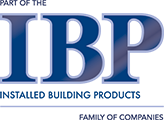By Justin Koscher, Director, Spray Foam Coalition
Fifteen years ago, energy and water efficiency defined what it meant to build green. Over time this definition has expanded, and today’s high performance buildings are measured on a growing list of metrics that include other considerations such as siting requirements, renewable energy, resiliency, and building material selection. And to help measure those additional considerations, increasingly sophisticated tools and green building rating systems have been developed. Tools like Green Building Institute’s Green Globes and U.S. Green Building Council’s (USGBC) Leadership in Energy and Environmental Design (LEED) provide architects and owners third-party verification of building performance.
Specifying for Building Green
Selecting the right material for any job is not a simple decision. Owners today want buildings constructed with materials that not only deliver outstanding performance and durability, but also create healthy and comfortable indoor environments for building occupants. In a typical job, an architect must consider project budgets, product availability, building code requirements, and client demands. Certain green building projects may add additional complexity to an architect’s decision. For example, clients or rating systems may limit the selection of building materials to those with specific performance attributes, characteristics, or ingredients. Making these decisions requires comprehensive information.
The building material industry has responded by developing Life Cycle Assessments (LCAs) and Environmental Product Declarations (EPDs). LCAs and EPDs communicate the environmental benefits and impacts of a particular building material from raw material extraction to end of life disposal. Green building rating systems have incorporated these tools into their programs. For example, the LEED rating system includes a Building Disclosure and Optimization credit that encourages the use of products that have life-cycle information and environmentally, economically, and socially-preferable impacts.
Unfortunately, efforts to disclose product information can have unintended consequences. A single data point may be used to deselect a product as compared to a decision based on the product’s life cycle performance. Single attribute choices can lead to the use of less efficient, less durable products leaving clients with poorly performing buildings. Plastic building products can be especially impacted by this line of thinking as advocates call for eliminating the use of certain chemicals in building products.
However, the business of chemistry has teamed with other interested stakeholders to offer a performancebased approach to material selection. In November 2015, USGBC announced a new credit option for LEED v4 – known as Material Ingredients Option 3 – that promotes the use of products manufactured by companies with a robust program for continual improvement in environmental, health and safety management. Architects serving clients with interests in material ingredients can use Option 3 to specify high-performance building materials while avoiding the many pitfalls of single attribute decision making. Additional guidance for using Option 3 can be found on the USGBC website here: www.usgbc.org/resources/grid/leed.
Justin Koscher is a director at the Center for Polyurethanes Industry and Spray Foam Coalition. He can be reached at justin_koscher@americanchemistry.com.




